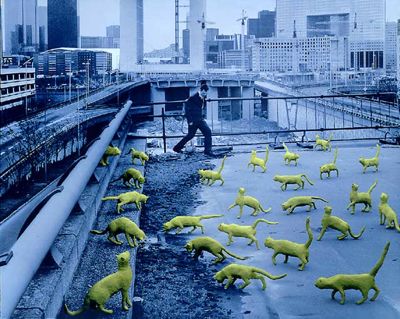Between getting ready for the start of another school year and serving grand jury duty here in New York, it’s been quite a few weeks. Before I share some words of wisdom for teachers and students from three artists, I want to thank everyone who pitched in on the last few posts regarding David Brooks’ Desert Rooftops. Making meaning and making sense of works like these with you is what I live for!
Because I so love questions and quotes, and use them in my own teaching to get students thinking about process, predetermined notions about contemporary art and even prejudices, this week I wanted to offer three dynamite thoughts to get students thinking out of the gate in late summer…
First, for all of us working with young photographers (and who isn’t today?), some perspective from Duane Michals:
I don’t think photographs should tell you too much. Photographs should make you come to them. They shouldn’t spill the beans.
Students should be gently reminded that an element of mystery, or involving the viewer in completing the story, can become a way of engaging our audiences.
Second, a note about awareness from Gregory Amenoff:
I think all painters make paintings that may not represent their best work but are nonetheless pivotal in their development. That is, they discover something in a piece that represents a moment of realization. It might be color, it might be paint handling, it might be hooking onto a personal subject matter, or whatever else.
As artists and educators, we want to be aware of when these possibly pivotal moments present themselves. We want to encourage students to explore what may not be their best work but may be an approach or idea that has legs.
Finally, a wonderful reminder from Sandy Skoglund:
An interesting thing about work that goes out and has an audience is that there’s a discrepancy between what you think or intend and how it’s perceived. Also, of course, the way things are perceived changes through time.
Skoglund’s quote reminds me of a recent visit this summer to Diana Al-Hadid’s studio and how she seemed so receptive to the stories that viewers construct versus what may have inspired the work. It’s important for us to remind students, often, that a dialogue with the audience can be much more rewarding than simply telling the viewer what the work is about and filling in all the blanks for them. Sometimes, I dare say, the viewer comes up with a more interesting story.





Pingback: Duane michals | Monaschilling